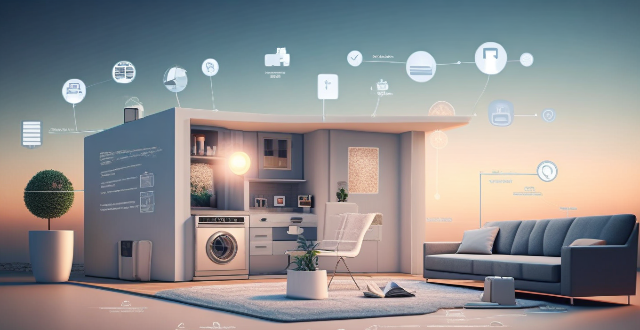This article explores how smart home gadgets facilitate accessibility for individuals with disabilities. It covers voice assistants, smart lighting, smart security systems, and smart appliances, highlighting their benefits and providing examples of how they can be used to enhance independence and accessibility. The article concludes that smart home gadgets offer innovative solutions for people with disabilities, improving their quality of life as technology continues to advance.

How Smart Home Gadgets Facilitate Accessibility for Individuals with Disabilities
Introduction
Smart home gadgets have revolutionized the way we live, work, and interact with our surroundings. For individuals with disabilities, these devices offer unprecedented levels of accessibility and independence. In this article, we will explore how smart home gadgets facilitate accessibility for people with disabilities.
1. Voice Assistants
Key Points:
- Voice assistants like Amazon Alexa, Google Assistant, and Apple Siri enable hands-free control of smart home devices.
- They can be used to control lights, thermostats, and other appliances, making it easier for individuals with physical limitations to manage their environment.
- Voice assistants also provide valuable information such as weather updates, news headlines, and reminders.
Examples:
- An individual with limited mobility can use voice commands to turn on the lights, adjust the temperature, or even lock the doors without having to physically move around.
- A person with visual impairments can ask the voice assistant to read out text messages or emails, reducing the need for screen readers or braille displays.
2. Smart Lighting
Key Points:
- Smart lighting systems allow users to customize light settings based on their preferences and needs.
- They can be controlled remotely using smartphones or tablets, providing greater flexibility and convenience.
- Smart lighting can also be integrated with other smart home devices to create automated routines and scenarios.
Examples:
- An individual with low vision can set up a "morning routine" that gradually increases the brightness of their bedroom lights over a specified period, helping them wake up more comfortably.
- A person with hearing impairments can use smart bulbs that flash when there is an incoming call or notification, alerting them without relying on auditory cues.
3. Smart Security Systems
Key Points:
- Smart security systems offer enhanced safety and peace of mind for individuals with disabilities.
- These systems include motion sensors, doorbell cameras, and window sensors that can be monitored and controlled remotely.
- Smart security systems can also integrate with emergency services to provide immediate assistance in case of an emergency.
Examples:
- An individual with mobility issues can use a smart doorbell camera to see who is at the door before answering it, reducing the need to physically go to the door themselves.
- A person with cognitive disabilities may benefit from automated reminders to lock doors or windows at night, ensuring their safety and security.
4. Smart Appliances
Key Points:
- Smart appliances like refrigerators, washing machines, and ovens offer advanced features and convenience for individuals with disabilities.
- These appliances can be controlled remotely using smartphones or tablets, allowing users to monitor and manage their household tasks from anywhere.
- Smart appliances can also be integrated with other smart home devices to create automated routines and scenarios.
Examples:
- An individual with limited dexterity can use voice commands to start a load of laundry or preheat the oven without having to physically press buttons or dials.
- A person with visual impairments can use a smart refrigerator that reads out expiration dates and provides alerts when food items are about to expire, helping them maintain food safety and reduce waste.
Conclusion
Smart home gadgets have opened up new possibilities for individuals with disabilities by providing greater accessibility and independence in their daily lives. From voice assistants and smart lighting to smart security systems and appliances, these devices offer innovative solutions that cater specifically to the needs of people with disabilities. As technology continues to advance, we can expect even more advancements in this field, further enhancing the quality of life for individuals with disabilities.